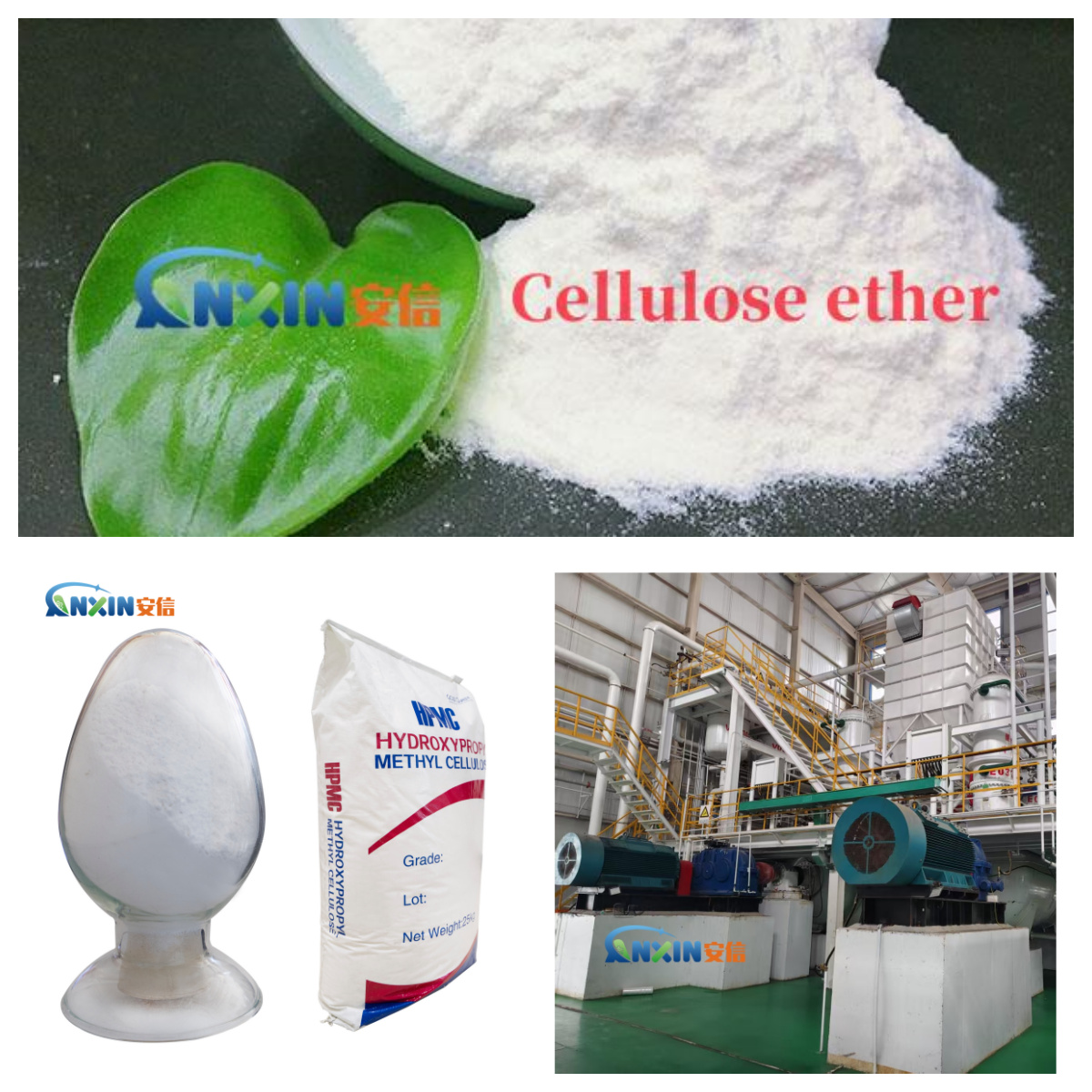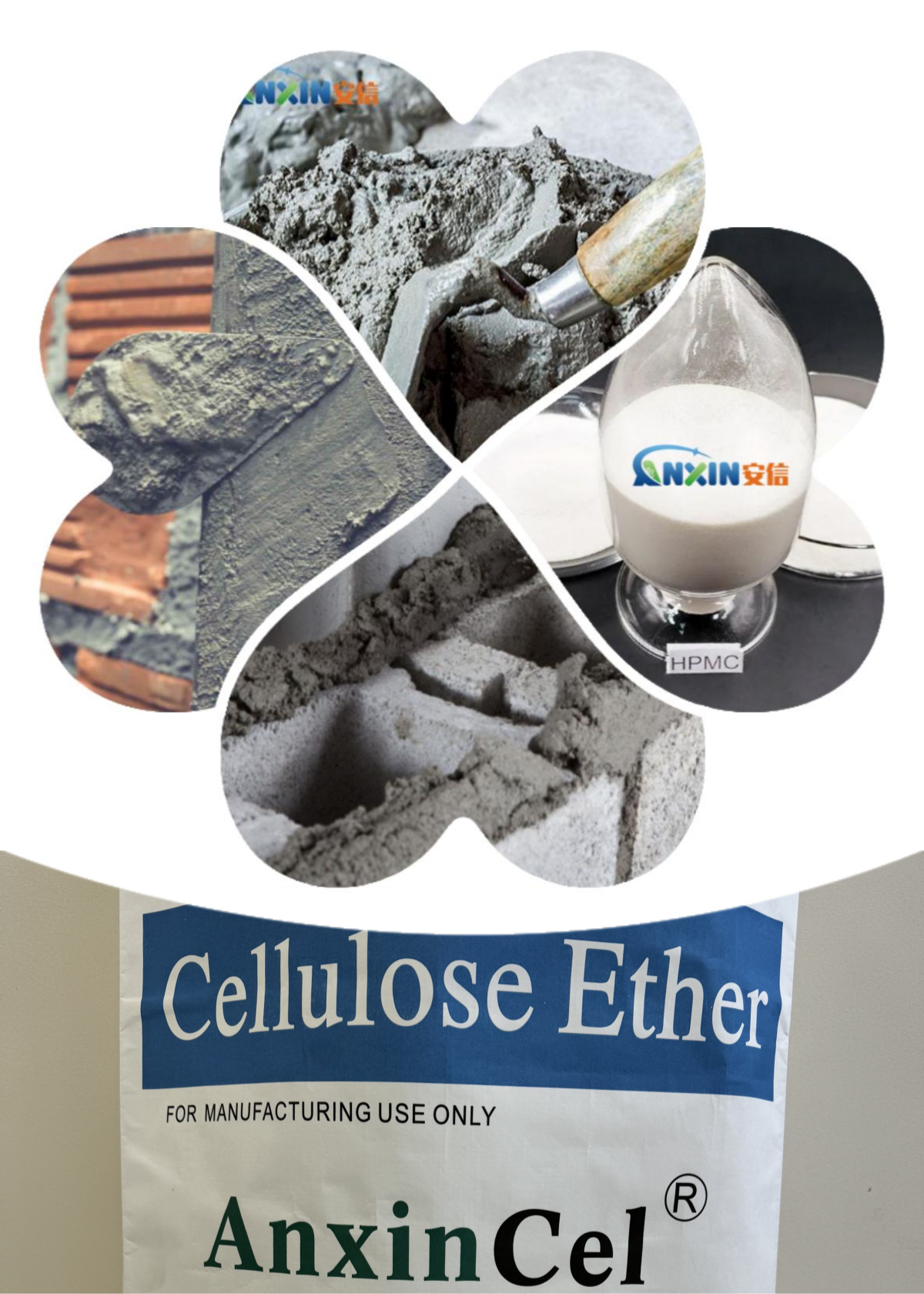Cellulose ether is a kind of polymer compound obtained by chemical modification of natural cellulose, which has excellent solubility, thickening, water retention and film-forming properties. Common types of cellulose ether include hydroxypropyl methylcellulose (HPMC), methylcellulose (MC), hydroxyethyl cellulose (HEC), hydroxyethyl methylcellulose (HEMC), etc. They are widely used in building materials, especially in dry-mixed mortar systems.
1. Mechanism of action of cellulose ether in mortar
In modern mortar formulas, cellulose ether, as a key chemical additive, mainly plays a role in the following aspects:
1.1. Improved water retention
Cellulose ether molecules are rich in hydrophilic groups, which can adsorb and lock free water, delay the evaporation and penetration of water, allow water to fully participate in cement hydration reaction, and improve the efficiency of early strength formation. When constructing on substrates with strong water absorption (such as aerated concrete, bricks), cellulose ether can effectively prevent excessive water absorption and avoid cracking and powdering.
1.2. Thickening and improving construction performance
Cellulose ether can significantly improve the viscosity and thixotropy of mortar, so that the mortar shows good fluidity and construction performance when mixing and applying, but has high adhesion and anti-slip properties in a static state, thereby improving construction smoothness and reducing sagging.
1.3. Improving bonding strength
By enhancing the cohesion of the mortar and the interfacial bonding performance with the substrate, cellulose ether improves the bonding strength of the mortar, avoiding problems such as delamination and hollowing in the later stage, and is particularly suitable for tile adhesives, self-leveling mortars and external insulation systems.
1.4. Delaying setting time and improving operability
Cellulose ether can appropriately extend the open time of the mortar, allowing workers to have more time to adjust and trim during construction, while avoiding construction defects caused by premature drying.
2. Application of cellulose ether in different types of mortars
2.1. Plastering mortar
Adding cellulose ether to plastering mortar can improve the adhesion between the mortar and the wall, and prevent problems such as “hollowing and cracking”. Its good water retention can also ensure uniform drying of the ash layer and improve the finishing effect.
2.2. Tile Adhesive
Tile adhesives have high requirements for water retention and anti-slip properties. Cellulose ether can significantly improve its bonding strength, prevent tiles from sliding down, and ensure good bonding effect on the back of tiles with low water absorption.
2.3. Self-leveling mortar
Cellulose ether provides the necessary consistency and water retention in self-leveling mortar to ensure uniform laying without quality problems such as bleeding and cracks. Low-viscosity cellulose ether varieties are particularly suitable for such applications.
2.4. Insulation mortar (EIFS system)
In the external wall insulation system, cellulose ether is added to both bonding mortar and anti-cracking mortar to improve crack resistance, enhance bonding strength, and improve the durability and stability of the overall system.
2.5. Dry-mixed masonry mortar
Dry-mixed masonry mortar is often used in brick masonry construction. Cellulose ether can improve its pumpability, water retention and anti-sag, make the mortar uniform and full, and improve the density and compressive strength of the masonry.
3. Factors affecting performance
The performance of cellulose ether has a significant impact on the final performance of the mortar, mainly including the following aspects:
Viscosity grade: High-viscosity cellulose ether is suitable for mortars that require high anti-slip properties, while low viscosity is suitable for self-leveling products.
Degree of substitution (DS) and molar substitution (MS): These two parameters determine the solubility, water retention and stability of cellulose ether.
Particle size: Fine powder is easier to disperse in mortar, improving overall uniformity.
Dissolution rate: Fast-dissolving cellulose ether helps improve production efficiency and mixing efficiency.
4. Usage recommendations and precautions
Choose the appropriate viscosity and type of cellulose ether to match the specific mortar system requirements.
The mixing process should ensure that the cellulose ether is evenly dispersed to avoid local agglomeration affecting performance.
Control the amount of addition, generally 0.1%-0.5% of the weight of cement. Too much may affect strength and drying time.
When used with other additives (such as redispersible latex powder, water reducing agent, etc.), attention should be paid to compatibility testing.
As one of the core additives in modern dry-mixed mortar, cellulose ether plays an irreplaceable role in construction performance, mechanical properties and durability. With the development of green buildings and prefabricated buildings, the demand for high-performance mortar continues to grow, and the types and technologies of cellulose ether are also constantly being optimized. The reasonable selection and scientific application of cellulose ether will significantly improve the quality of mortar products and construction efficiency, which is an important direction for the current development of building materials.
Post time: Jul-10-2025

